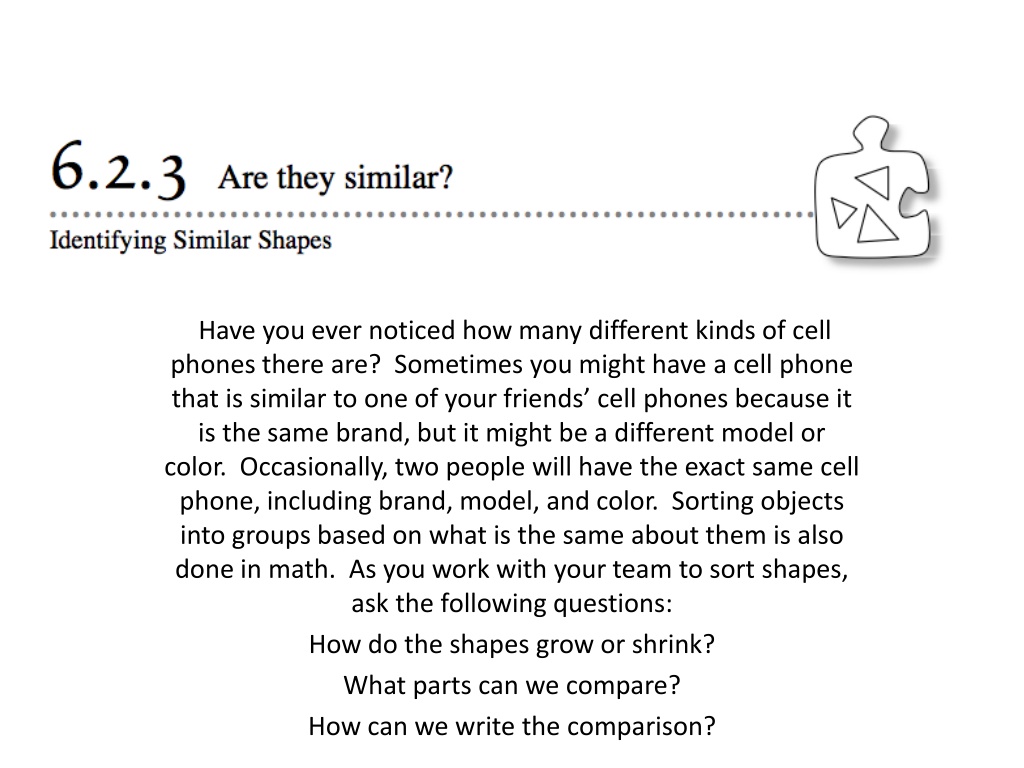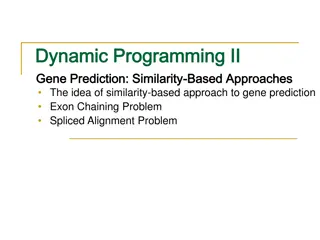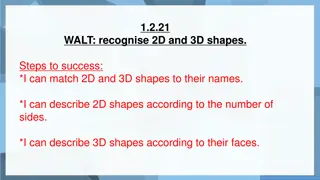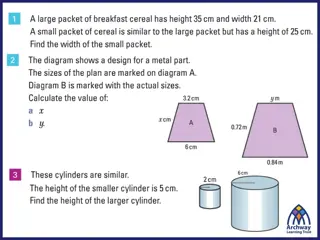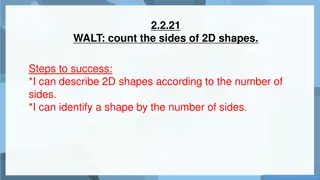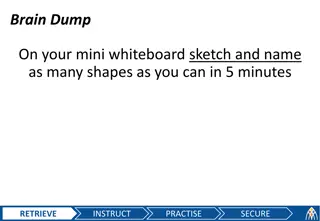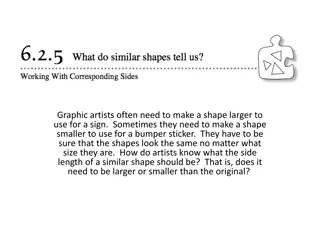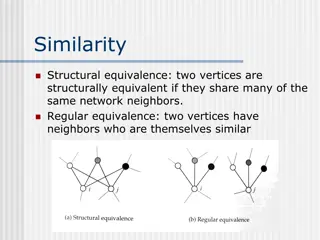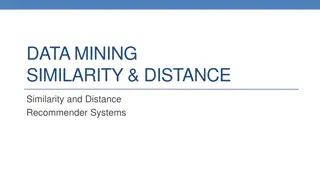Exploring Shapes and Similarity Concepts
Discover the concept of shape similarity through fun activities involving comparing angles, sides, and scale factors. Engage in hands-on exercises to identify congruent shapes and understand the criteria for shapes to be considered similar. Dive into practical examples and visual representations that enhance your understanding of mathematical concepts related to shape similarity.
Download Presentation

Please find below an Image/Link to download the presentation.
The content on the website is provided AS IS for your information and personal use only. It may not be sold, licensed, or shared on other websites without obtaining consent from the author.If you encounter any issues during the download, it is possible that the publisher has removed the file from their server.
You are allowed to download the files provided on this website for personal or commercial use, subject to the condition that they are used lawfully. All files are the property of their respective owners.
The content on the website is provided AS IS for your information and personal use only. It may not be sold, licensed, or shared on other websites without obtaining consent from the author.
E N D
Presentation Transcript
Have you ever noticed how many different kinds of cell phones there are? Sometimes you might have a cell phone that is similar to one of your friends cell phones because it is the same brand, but it might be a different model or color. Occasionally, two people will have the exact same cell phone, including brand, model, and color. Sorting objects into groups based on what is the same about them is also done in math. As you work with your team to sort shapes, ask the following questions: How do the shapes grow or shrink? What parts can we compare? How can we write the comparison?
6-64. WHICH SHAPES ARE SIMILAR? If two shapes appear to have the same general relationship between sides, how can you decide for sure if the shapes are similar? Work with your team to: Carefully cut out the original shape and shapes A through G from one copy of the Lesson 6.2.3 Resource Page. Decide how each shape is related to the original shape. (Each person should use an uncut copy of the resource page and the team s cut out shapes to help decide.) Compare the angles and the sides of shapes A through G to the original shape.
6-64. WHICH SHAPES ARE SIMILAR? a) Which shapes are similar to the original shape? Give specific reasons to justify your conclusions. b) Now look only at the shapes that are similar to the original shape. What do these shapes have in common? What is different about them? Be specific. c) When two shapes are similar, the scale factor is the number you multiply the length of the side of one shape by to get the length of the corresponding side of the new shape. What is the scale factor between the original shape and shape E? Is each side of the shape enlarged the same number of times? Use a ruler to help you decide, if needed. d) What is the scale factor between the original shape and shape C? Why is it less than 1?
6-65. Shapes that are similar but do not grow or shrink are called congruent shapes. a) Which shape from problem 6-64 is exactly equal to the original shape in every way? b) Record the pairs of shapes below that appear to be congruent to each other.
6-66. Quan enlarged shape Q to make shape P, below. Are his shapes similar? If they are similar, identify the scale factor (multiplier). If they are not, demonstrate that at least one pair of sides does not share the scale factor.
6-67. Draw each of the shapes in problem 6-66 on graph paper. Color-code the corresponding sides on each shape using the colors suggested by your teacher. a) Compare the green sides of each shape. What do you notice about those sides? b) Compare each of the other five sides of shape P with their corresponding sides on shape Q. What do you notice about those pairs of sides? c) Imagine enlarging shape P to make a new shape R that has a base 25 units long. If shape R is similar to shape P, predict the length of the shorter vertical side of shape R without drawing the shape. What is the scale factor in this situation?
6-68. Using the triangle shown at right as the original figure, predict which of the scale factors below would enlarge (make bigger) or reduce (make smaller) the shape. (Do not actually make a new shape.) 5 3 3 4 7 6 2 3
6-68 Divide up the scale factors from the previous problem among your teammates. Copy the original triangle and then create your new triangle with your assigned scale factor. a) Show your new triangle to your teammates and check your predictions. Which scale factors made the triangle larger? Which made the triangle smaller? Is there a pattern? Which parts of the new triangles remained the same as the original triangle? Which parts changed? How do you know? Each of the new triangles is similar to the original triangle used to create it. Compare the corresponding (matching) sides and angles to each other. Describe the relationship or explain why you think there is no relationship. What scale factor could you use to create a triangle that is congruent to the original? Explain. Additional Challenge: Find a scale factor that will make a similar shape that is larger than the original but has a scale factorless than 2. b) c) d) e)
6-69. LEARNING LOG In your Learning Log, explain how to determine when shapes are similar. To decide if two shapes are similar, what do you need to know about the side lengths? The angles? Title your entry Finding Similar Shapes and include today s date.
